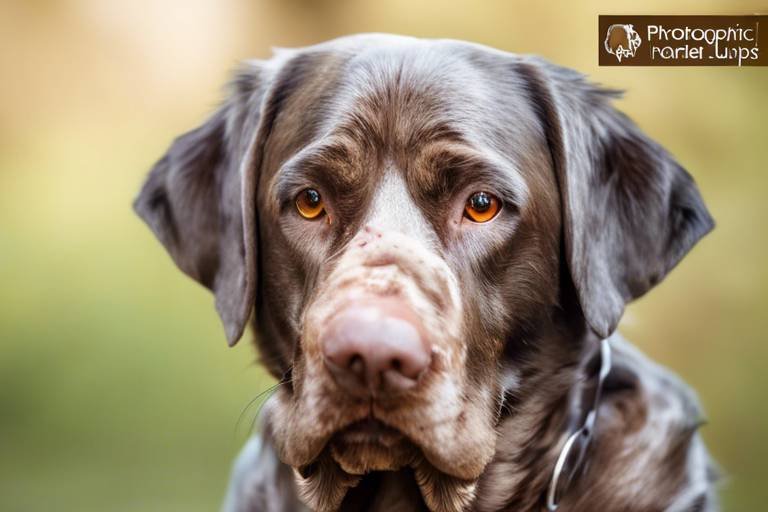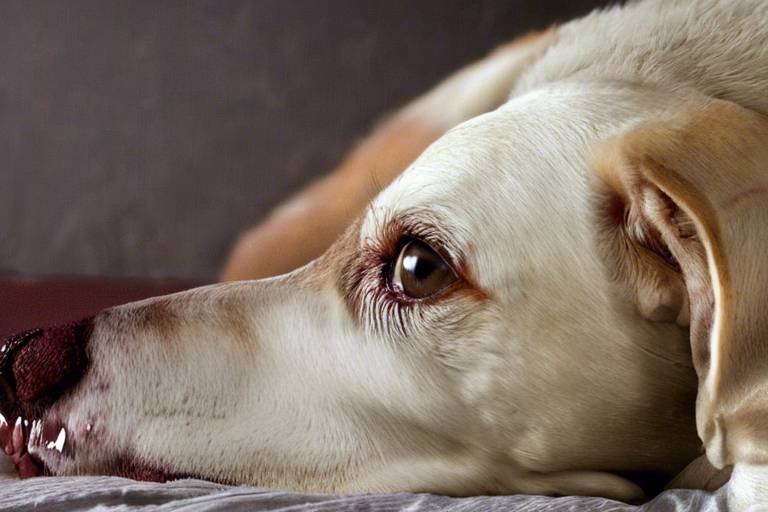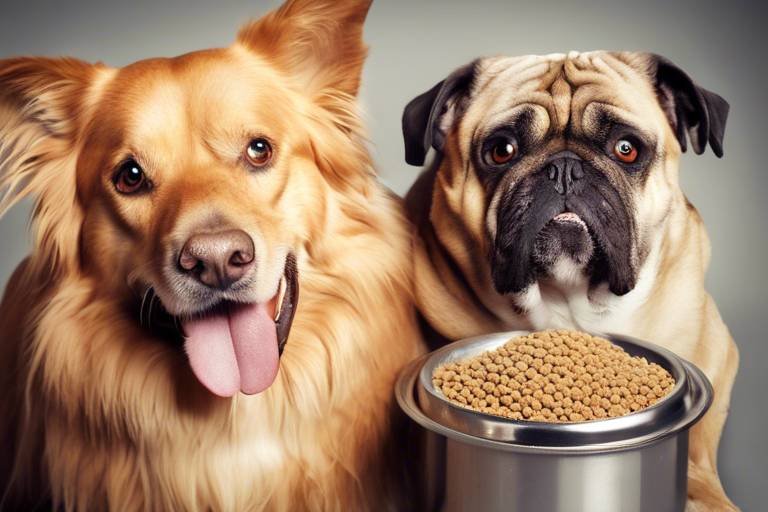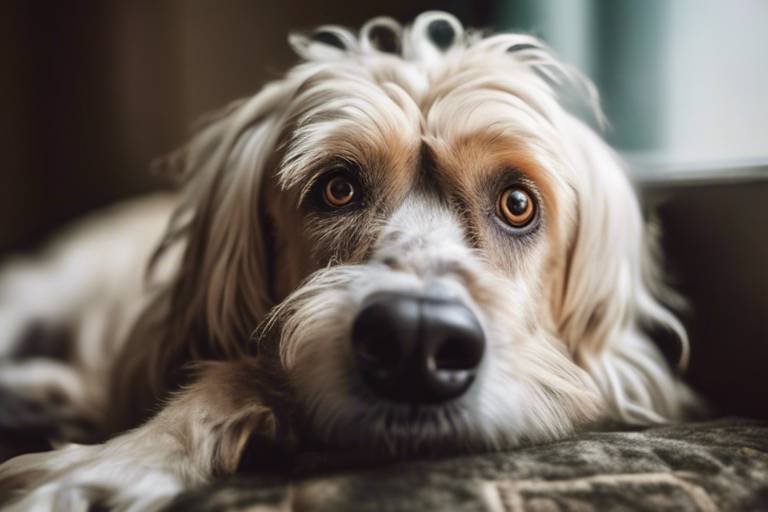How to Recognize and Treat Lumps in Older Pets
As our beloved furry companions age, it’s not uncommon to discover lumps or bumps on their bodies. While some of these growths can be harmless, others might signal a more serious health concern. Understanding how to recognize and treat these lumps is essential for ensuring your pet's well-being. In this article, we will explore the different types of lumps you may encounter, the signs that indicate a need for veterinary care, and the treatment options available. By being proactive and informed, you can help your older pet live a healthier, happier life.
Lumps in older pets can vary significantly in type and significance. Some common types include:
- Lipomas: These are benign fatty tumors that are usually soft and movable under the skin.
- Cysts: Fluid-filled sacs that can develop in various tissues, often harmless but sometimes requiring attention.
- Malignant tumors: These are cancerous growths that can pose serious health risks and require immediate veterinary evaluation.
Recognizing the type of lump your pet has can help you understand whether it needs treatment. For example, while a lipoma may not require intervention, a rapidly growing tumor could be a cause for concern.
Recognizing the signs of lumps in pets is crucial for early detection. If you notice any unusual growths, pay attention to accompanying symptoms that may indicate a problem. These can include:
- Changes in behavior
- Alterations in appetite
- Decreased mobility or activity levels
Being aware of these signs can prompt timely veterinary visits, allowing for early diagnosis and treatment.
Behavioral changes in your pet can be significant indicators of underlying health issues. For instance, if your once playful dog suddenly becomes withdrawn or irritable, it could be a sign that something is wrong. Lumps can cause discomfort or pain, leading to a shift in your pet's mood and activity levels. If you notice your pet is less enthusiastic about their daily walks or playtime, it’s time to investigate further.
Increased irritability can signal discomfort or pain associated with lumps. Older pets may react differently when they are in distress, so subtle changes in their demeanor—like snapping at you during petting or hiding away—can be crucial clues. It's important to observe these changes closely and consider them when assessing your pet's health.
A noticeable decline in activity can be a warning sign. If your pet seems lethargic or reluctant to engage in play, this might indicate that a lump is causing discomfort. Monitoring your pet's activity levels is essential; if you see a significant drop-off, don’t hesitate to seek veterinary advice.
Physical symptoms accompanying lumps can provide vital clues about your pet's health. Look for signs such as:
- Swelling or changes in the size of the lump
- Redness or irritation around the lump
- Discharge or bleeding from the lump
These symptoms can help you identify potential issues and decide whether it's time for a vet visit.
Knowing when to consult a veterinarian is essential for your pet's health. Certain situations warrant immediate attention:
- Rapid Growth of Lumps: If you notice a lump growing quickly, it may indicate a serious condition. Monitoring lump growth is crucial, and seeking immediate veterinary advice is recommended.
- Accompanying Health Issues: If lumps are linked to other symptoms, such as weight loss or vomiting, it’s critical to have your pet examined by a veterinarian.
There are various treatment options for lumps in older pets, and the right choice depends on the type and severity of the lump. Common approaches include:
- Surgical Intervention: Surgery may be necessary for certain types of lumps, especially if they are cancerous. The surgical process, recovery, and potential outcomes should be discussed with your veterinarian.
- Monitoring and Management: In some cases, monitoring may be the best approach. If a lump isn’t immediately concerning, your vet may recommend regular check-ups to ensure it doesn’t change.
Understanding these options empowers owners to make informed decisions about their pet's health.
Q: How can I tell if a lump is serious?
A: If a lump is growing quickly, changing in shape, or accompanied by other symptoms like weight loss, it’s essential to consult a veterinarian.
Q: Are all lumps in older pets cancerous?
A: No, many lumps are benign, such as lipomas and cysts. However, it’s always best to have any new lump evaluated by a vet.
Q: What should I do if I find a lump on my pet?
A: Monitor the lump for changes and consult your veterinarian for a proper diagnosis and treatment plan.
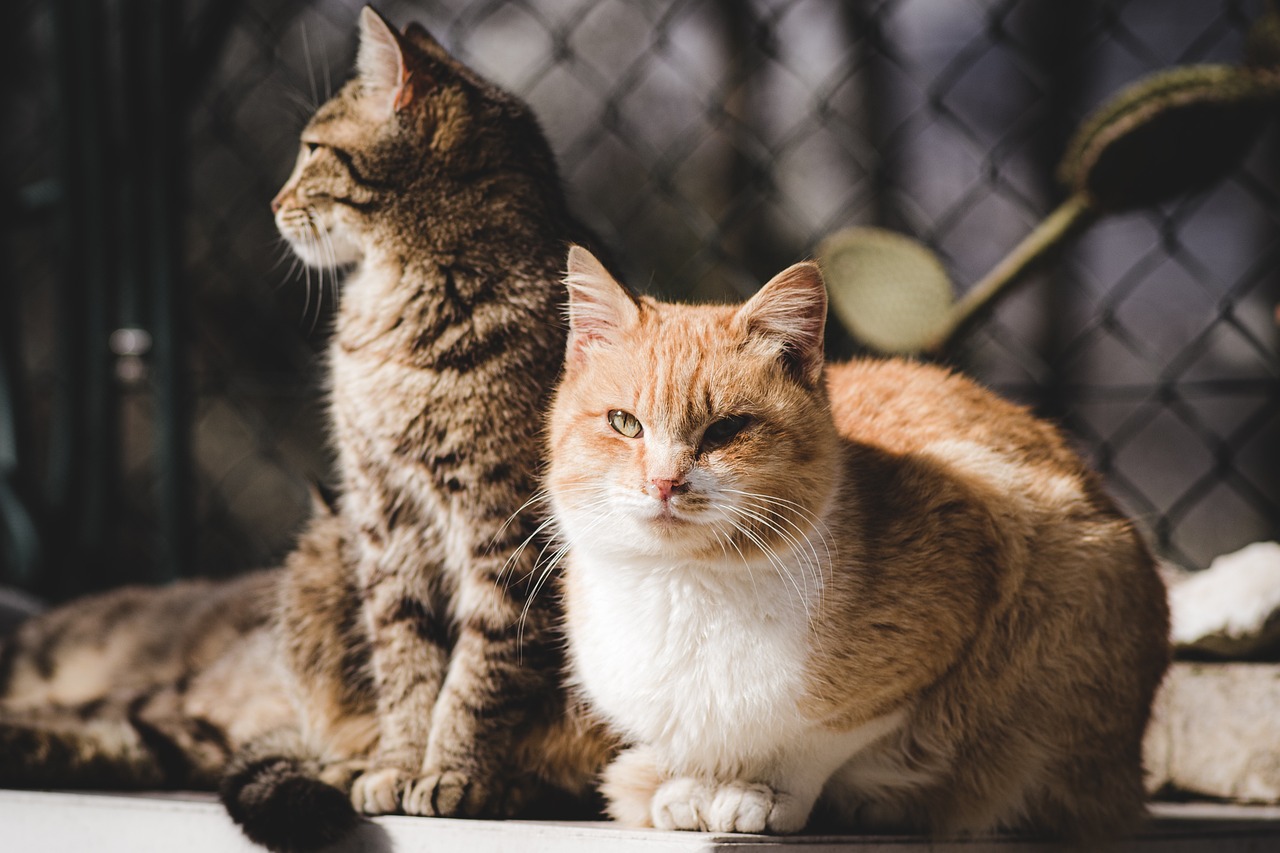
Understanding Common Types of Lumps
When it comes to our beloved older pets, discovering a lump can be a source of concern and anxiety. It's essential to understand that not all lumps are created equal. Some may be harmless, while others could require immediate attention. In this section, we will delve into the most common types of lumps that you might encounter on your furry friend, helping you to identify and understand what they might signify.
One of the most prevalent types of lumps in older pets is lipomas. These are benign tumors made of fat cells that often appear as soft, movable lumps under the skin. Lipomas are generally harmless and don’t usually require treatment unless they become bothersome or interfere with your pet’s daily activities. You might notice them on various parts of your pet's body, and while they can be quite alarming at first glance, they are often nothing to worry about.
Another common type of lump is a cyst. Cysts are fluid-filled sacs that can develop in various tissues. They can occur due to blocked oil glands or other factors. While many cysts are benign, they can sometimes become infected or inflamed, leading to discomfort for your pet. If you notice any redness, swelling, or discharge from a cyst, it’s time to consult your veterinarian.
Then we have tumors, which can be classified into benign and malignant types. Malignant tumors are cancerous and can spread to other parts of the body, making them a serious concern. It's crucial to monitor any lump for changes in size, shape, or color, as these could be signs of a malignant tumor. Regular veterinary check-ups can help catch any potential issues early on, allowing for timely intervention.
To help you better understand these common types of lumps, here’s a quick comparison:
| Type of Lump | Description | Treatment |
|---|---|---|
| Lipoma | Benign fat tumor, soft and movable | Usually none; surgical removal if bothersome |
| Cyst | Fluid-filled sac, can be infected | Drainage or surgical removal if necessary |
| Tumor | Can be benign or malignant | Depends on type; may require surgery or other treatments |
Understanding these types of lumps is the first step in ensuring your pet's health and well-being. Regular check-ups and being observant of any changes can help you catch problems early, leading to better outcomes for your furry companions. Remember, if you ever feel uncertain about a lump, it’s always best to consult with your veterinarian. They can provide you with the guidance you need to keep your pet healthy and happy.
- What should I do if I find a lump on my pet? - It's best to consult your veterinarian for an evaluation.
- Are all lumps in older pets cancerous? - No, many lumps are benign, but it's essential to have them checked.
- How can I monitor my pet's lumps at home? - Regularly check for changes in size, shape, or behavior and note any discomfort.
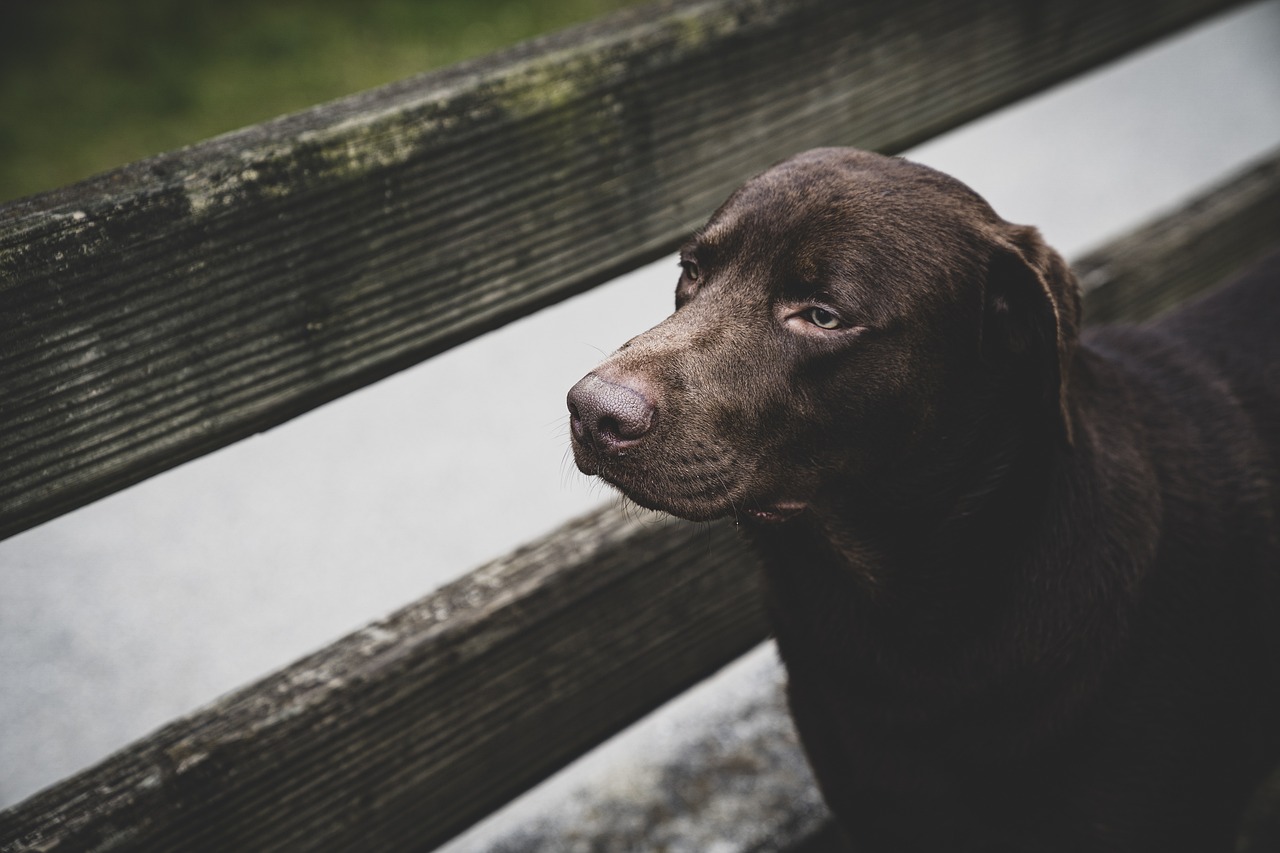
Signs to Look For
Recognizing the signs of lumps in your beloved older pets is crucial for early detection and intervention. Just like humans, our furry companions can experience changes in their bodies that may indicate underlying health issues. As a responsible pet owner, it's essential to stay vigilant and observe any changes in your pet's behavior and physical condition. Some common symptoms to look for include:
- Changes in Behavior: If your pet suddenly becomes more withdrawn, irritable, or less interactive than usual, it may be a sign that something is amiss. Behavioral changes can often signal discomfort or pain, prompting you to investigate further.
- Appetite Changes: A noticeable decrease in appetite or sudden weight loss can be alarming. If your pet is not eating as they usually do, it could indicate a health issue that requires attention.
- Mobility Issues: If your pet is reluctant to move, has difficulty jumping, or seems to be limping, these could be signs that a lump is causing discomfort or pain.
Moreover, physical symptoms accompanying lumps can provide vital clues. When examining your pet, look for:
- Swelling: Any unusual swelling or lumps that feel different from the surrounding tissue should be noted. This could indicate a variety of conditions, from benign cysts to more serious tumors.
- Redness or Irritation: If the area around the lump appears red or irritated, this could signal inflammation or infection, warranting immediate veterinary attention.
- Discharge: Any fluid or discharge coming from the lump is a red flag. This could indicate an abscess or other serious condition that needs to be addressed promptly.
It's also important to remember that some lumps can be painless and may not show any obvious symptoms at first. Regular check-ups with your veterinarian can help catch these issues early. Just like a ticking time bomb, some health problems can escalate quickly if not addressed. So, keeping a close eye on your pet's overall health and behavior is not just good practice—it's essential for their well-being.
In summary, being aware of these signs can make a significant difference in your pet's health. If you notice any of the above symptoms or have concerns about lumps, don’t hesitate to reach out to your veterinarian. Early detection can lead to better outcomes and a happier, healthier life for your furry friend.
Q: What should I do if I find a lump on my pet?
A: If you discover a lump, it's best to consult your veterinarian as soon as possible for an evaluation.
Q: Are all lumps dangerous?
A: Not all lumps are harmful; some can be benign, like lipomas. However, it's essential to have them assessed by a professional.
Q: How often should I check my pet for lumps?
A: Regularly check your pet’s body during grooming or petting sessions. Monthly checks can help you notice any changes early.
Behavioral Changes
When it comes to our beloved furry friends, can often be the first hint that something is amiss. Imagine your once playful dog, who would leap at the chance to chase a ball, suddenly choosing to lie quietly in a corner. This shift in attitude can be a clear sign that a lump or growth is causing discomfort or pain. It's essential for pet owners to be vigilant and recognize these subtle shifts in behavior, as they can provide vital clues about their pet's health.
One of the most telling indicators of a problem is an increase in irritability. If your pet, who typically enjoys cuddles and attention, starts snapping at you or other pets, it could be a signal that they are feeling unwell. Irritability can stem from pain associated with lumps, and it’s crucial to pay attention to these signs. Additionally, if your pet seems to be avoiding interaction or hiding more than usual, it might be time to consult your veterinarian.
Another significant behavioral change to watch for is a decrease in activity levels. If your pet is no longer eager to go for walks or engage in play, this lethargy could be a warning sign. It’s almost as if their spirit has dimmed; they may not be as enthusiastic about their favorite activities. This lack of energy can be linked to discomfort from lumps, making it essential to monitor their behavior closely. If you notice that your pet is less active than usual, consider keeping a log of their behavior to discuss with your vet.
In addition to these changes, you might also observe alterations in their eating habits. A pet that suddenly loses interest in food or starts eating less can be an indicator of underlying health issues. Sometimes, the discomfort from a lump can make eating painful, leading to a decrease in appetite. If you notice any significant changes in how much or how often your pet eats, it’s worth noting and discussing with your veterinarian.
Ultimately, being attuned to your pet’s behavioral changes can make a significant difference in their health and well-being. By recognizing these signs early, you can ensure that your furry companion receives the necessary care and treatment. Remember, you know your pet best, and any deviation from their normal behavior should be taken seriously. If you have concerns, don’t hesitate to reach out to your vet for guidance.
- What should I do if I notice a lump on my pet?
It's best to schedule a veterinary appointment as soon as possible to have the lump evaluated. - Are all lumps in older pets dangerous?
Not all lumps are harmful, but it's essential to have them checked to determine their nature. - How can I monitor my pet's lumps at home?
Regularly check for changes in size, shape, or texture, and observe any related behavioral changes. - What treatments are available for lumps in pets?
Treatment options may include surgical removal, medication, or simply monitoring, depending on the lump's nature.
Increased Irritability
When it comes to our furry companions, increased irritability can often be a telltale sign that something isn’t quite right. Imagine if you were feeling unwell; you might snap at someone for the smallest things, right? Well, our pets can react similarly when they are in discomfort. If you notice your older pet becoming more irritable than usual, it’s essential to pay attention because this behavior could be linked to the presence of lumps or other underlying health issues.
Older pets, much like elderly humans, can experience a range of physical changes that affect their mood and behavior. Lumps, whether they are benign or malignant, can cause pain or discomfort, leading to increased irritability. For instance, a pet that once enjoyed a good belly rub might suddenly flinch or growl when touched in a particular area. This change is not merely a personality shift; it’s a signal that your pet may be in distress.
Consider the following scenarios that might indicate increased irritability in your pet:
- Unusual Aggression: If your pet is snapping or growling at family members or other pets, it may be a sign of pain.
- Withdrawal: A once social pet might start isolating themselves, avoiding interactions that they typically enjoyed.
- Excessive Vocalization: Increased whining, barking, or meowing can indicate discomfort or frustration.
It’s crucial to observe these behavioral changes closely. If your pet is showing signs of increased irritability, consider whether there are any lumps present. If you find any, or if the irritability persists, it’s time to consult your veterinarian. They can provide a thorough examination to determine if the lumps are causing pain or discomfort and recommend appropriate treatment options.
Remember, our pets rely on us to be their advocates. By recognizing these signs and understanding their implications, you can ensure that your beloved companion receives the care they need. Don’t hesitate to seek veterinary advice if you suspect that irritability is linked to a health issue. After all, a happy pet is a healthy pet!
Q: What should I do if I notice a lump on my pet?
A: It’s best to schedule an appointment with your veterinarian for a thorough examination to determine the nature of the lump.
Q: Are all lumps in pets dangerous?
A: Not all lumps are harmful; some may be benign, like lipomas. However, it’s essential to have any lump evaluated by a vet.
Q: How can I tell if my pet is in pain?
A: Signs of pain can include changes in behavior, increased irritability, reluctance to move, or vocalization.
Q: What are the treatment options for lumps in older pets?
A: Treatment can range from monitoring the lump to surgical removal, depending on the type and severity of the lump.
Decreased Activity Levels
As our furry friends age, it's not uncommon for their energy levels to decline, but a significant drop in activity can be a red flag. If you notice your older pet becoming less playful or spending more time lounging around, it might be a sign that something is amiss. Just like us, pets can experience discomfort or pain that affects their desire to engage in their favorite activities. This isn't just about getting older; it’s often a signal that their body is dealing with underlying issues, such as lumps or other health concerns.
For instance, if your dog used to race around the yard chasing squirrels but now prefers to watch from the porch, it’s time to take notice. Changes in activity can manifest in various ways, including:
- Reluctance to Play: If your pet used to enjoy fetch or tug-of-war but now turns their nose up at the toys, this could indicate discomfort.
- Longer Naps: While older pets do require more rest, excessive sleeping can point to lethargy stemming from health issues.
- Difficulty in Movement: If your pet struggles to jump onto the couch or climb stairs, it may be due to pain caused by lumps or other conditions.
It’s essential to monitor these changes closely. If you notice a sudden or drastic decrease in your pet's activity levels, don’t brush it off as just part of aging. Instead, consider it a cue to consult with your veterinarian. They can help determine if the lumps are the cause of your pet's decreased activity or if there are other underlying health problems at play. Remember, early detection can make a world of difference in treatment outcomes and your pet's overall quality of life.
Ultimately, staying attuned to your pet's behavior can lead to better health management. Just as we might feel off when we’re not at our best, our pets can experience similar discomforts. So, keep an eye on those activity levels; they can tell you a lot about your pet's health!
- What should I do if I notice a lump on my pet? It's best to consult your veterinarian as soon as possible for an evaluation.
- Are all lumps in older pets dangerous? Not all lumps are harmful, but any new or changing lump should be assessed by a vet.
- How can I help my pet stay active as they age? Regular, gentle exercise and engaging activities suited to their abilities can help maintain their health.
- What are common signs of discomfort in older pets? Look for changes in behavior, decreased appetite, and altered mobility.
Physical Symptoms
When it comes to our beloved furry companions, noticing any that accompany lumps is crucial. These symptoms can provide vital clues about what might be going on beneath the surface. For instance, if you spot a lump on your pet, you should also be on the lookout for signs like swelling, redness, or any unusual discharge. Each of these indicators can tell a different story about your pet's health.
Swelling, for example, can indicate inflammation or infection, suggesting that the body is responding to something abnormal. If the lump appears to be growing larger, this should raise a red flag. Redness around the lump can be a sign of irritation or infection, indicating that your pet may be experiencing discomfort. Additionally, if you notice any discharge, whether it's clear, yellow, or bloody, this is a clear signal that something is amiss and warrants immediate attention.
It's also important to consider the location of the lump. Lumps found in certain areas, like near joints or the abdomen, may have different implications compared to those found on the skin. Each type of lump can present its own set of symptoms. For example, a lump that is painful when touched could indicate a more serious underlying issue, whereas a soft, movable lump might be less concerning.
Alongside these symptoms, keep an eye on your pet's overall demeanor. If they seem to be in pain, they may exhibit signs such as whining, limping, or excessive grooming around the area of the lump. These behaviors can provide additional context to the physical symptoms you observe. Remember, our pets can't speak, so it's up to us to be their voice and advocate for their health.
In summary, being vigilant about physical symptoms can make a significant difference in your pet's health. If you notice any concerning changes, don’t hesitate to consult your veterinarian. Early detection can lead to better outcomes, ensuring your furry friend stays happy and healthy.
- What should I do if I find a lump on my pet? - It's best to consult your veterinarian for a proper evaluation.
- Are all lumps dangerous? - Not all lumps are harmful, but it's essential to monitor them and seek professional advice.
- How can I tell if my pet is in pain? - Look for signs of discomfort such as whining, changes in behavior, or reluctance to move.
- What types of lumps are common in older pets? - Common types include lipomas, cysts, and tumors, each requiring different levels of attention.

When to See a Veterinarian
Knowing when to consult a veterinarian is essential for your pet's health and well-being. As a loving pet owner, you want to ensure that your furry friend is not only comfortable but also thriving. There are certain critical situations that should prompt you to seek veterinary care without delay. For instance, if you notice a lump that is rapidly growing, it's crucial to act fast. Rapid growth can often indicate a serious underlying condition that requires immediate attention. Don't wait to see if it resolves on its own; instead, make that call to your vet and get your pet the care they need.
Additionally, if your pet exhibits any accompanying health issues, such as significant weight loss, vomiting, or changes in appetite, it's time to schedule a veterinary visit. These symptoms can be warning signs that the lump is linked to a more severe health problem. Remember, your pet can't voice their discomfort, so being observant and proactive is key to their health.
It's also important to monitor your pet’s behavior closely. If you notice any signs of distress, such as increased irritability or a noticeable decrease in activity levels, these could be indicators that something is wrong. Older pets, in particular, may not show overt signs of pain, so subtle changes in their behavior can be significant.
Here are some specific situations when you should definitely see a veterinarian:
- Rapid Growth of Lumps: If the lump grows quickly, it could signal something serious.
- Accompanying Symptoms: Weight loss, vomiting, or changes in appetite can indicate a need for examination.
- Behavioral Changes: Increased irritability or decreased activity levels can be signs of discomfort.
In conclusion, keeping a close eye on your pet’s health is crucial, especially as they age. If you ever feel uncertain about a lump or any changes in your pet's condition, don't hesitate to reach out to your veterinarian. They are your best resource for ensuring your pet remains happy and healthy. After all, being proactive can make all the difference in your pet's quality of life.
Here are some common questions pet owners have regarding lumps in older pets:
- What should I do if I find a lump on my pet? - It's best to consult your veterinarian as soon as possible for a proper diagnosis.
- Are all lumps dangerous? - Not all lumps are harmful, but it's important to have them evaluated to rule out serious conditions.
- How can I tell if my pet is in pain? - Look for changes in behavior, such as increased irritability or reluctance to move.
- What treatments are available for lumps? - Treatment options vary and may include monitoring, medication, or surgery, depending on the type of lump.
Rapid Growth of Lumps
When it comes to our beloved pets, noticing any changes in their health can be alarming, especially when it involves lumps. One of the most concerning signs pet owners can observe is the . This can be a red flag indicating that something more serious is at play. While some lumps may be benign, a sudden increase in size can suggest a potential health issue that requires immediate veterinary attention.
So, how can you determine whether a lump is growing too quickly? Start by keeping an eye on its size over time. A lump that doubles in size within a few weeks is definitely worth a visit to the vet. It's essential to monitor not only the size but also the shape and texture of the lump. For instance, a lump that becomes irregular or hard may signal a more serious condition, such as a malignant tumor.
Additionally, consider the following factors when assessing the growth of a lump:
- Location: Lumps located in sensitive areas, such as near joints or organs, may pose more significant risks.
- Consistency: A lump that feels solid or firm could indicate a serious issue, while softer lumps might be less concerning.
- Associated Symptoms: If the lump's growth is accompanied by other symptoms like weight loss, vomiting, or changes in appetite, it's crucial to seek veterinary help.
Remember, the sooner you address any changes in your pet's health, the better the outcome is likely to be. Rapidly growing lumps can be linked to various conditions, from benign fatty tumors to more serious cancers. Therefore, keeping a close eye on your pet and maintaining open communication with your veterinarian is vital. If you notice a lump that has changed significantly in size or character, don’t hesitate to make an appointment. Early intervention can be lifesaving.
Accompanying Health Issues
When it comes to recognizing lumps in your older pet, it’s not just about the lump itself; it’s also about what might be happening beneath the surface. Lumps can often be a symptom of other underlying health issues, and understanding these connections is crucial for your pet's well-being. For instance, if your furry friend has developed a lump, you should also be on the lookout for other signs that could indicate a more serious condition.
One of the most significant indicators of a problem is weight loss. If your pet is suddenly shedding pounds, it could mean that the lump is affecting their overall health, possibly indicating malignancy or another serious issue. Additionally, vomiting is another red flag. If your pet is experiencing unexplained vomiting alongside the presence of a lump, it’s essential to take action. These symptoms could signify that the lump is interfering with their digestive system or could be a sign of systemic illness.
Moreover, changes in appetite can be a telltale sign of distress. If your pet is suddenly disinterested in their food or is eating significantly less than usual, it could be a response to pain or discomfort caused by the lump. Similarly, if you notice your pet seems more lethargic than usual, this could indicate that they are not feeling well overall. Lethargy can often accompany lumps that are causing pain or discomfort, leading to a decrease in their usual activity levels.
It’s also worth noting that some lumps can be associated with infections or other systemic issues. For example, a lump that is warm to the touch or has a discharge may indicate an abscess or infection requiring immediate veterinary attention. This emphasizes the importance of not only monitoring the lump but also paying attention to your pet’s overall health and behavior.
In summary, while the lump itself is a cause for concern, it’s the accompanying health issues that can provide a clearer picture of your pet’s condition. If you observe any of the following symptoms alongside a lump, it’s crucial to consult your veterinarian:
- Significant weight loss
- Persistent vomiting
- Loss of appetite
- Increased lethargy
- Signs of infection (warmth, redness, discharge)
By being vigilant and observant, you can ensure that your beloved pet receives the necessary care and attention, leading to a healthier and happier life.
Q: What should I do if I find a lump on my pet?
A: If you discover a lump on your pet, it’s essential to monitor it closely for any changes. Schedule a veterinary appointment to have it examined, especially if it grows or causes discomfort.
Q: Are all lumps on pets dangerous?
A: Not all lumps are harmful; some may be benign, like lipomas. However, it’s crucial to have any new or changing lumps evaluated by a veterinarian to rule out serious conditions.
Q: How can I tell if my pet is in pain due to a lump?
A: Signs of pain can include changes in behavior, decreased activity, increased irritability, or vocalization. If you notice any of these signs, consult your vet.
Q: What treatment options are available for lumps in older pets?
A: Treatment varies depending on the type of lump. Options may include surgical removal, medication, or monitoring. Your veterinarian can recommend the best course of action.

Treatment Options Available
When it comes to dealing with lumps in older pets, understanding the treatment options available is crucial for pet owners. Each type of lump may require a different approach, and it's essential to consult with a veterinarian to determine the best course of action. Generally, treatment options can be categorized into three main areas: surgical removal, medication, and monitoring.
Surgical intervention is often the most definitive treatment for lumps that are suspected to be tumors or are causing discomfort. During the surgery, the veterinarian will remove the lump along with a margin of healthy tissue to ensure that any potentially cancerous cells are eliminated. Post-surgery, your pet may require a recovery period, which could involve pain management and monitoring for any signs of infection. It's important for pet owners to follow the veterinarian's post-operative care instructions closely to ensure a smooth recovery.
On the other hand, not all lumps necessitate immediate surgical action. In some cases, medication may be prescribed to manage symptoms or treat underlying conditions. For example, if a lump is causing inflammation, anti-inflammatory medications or corticosteroids might be recommended. Additionally, if the lump is determined to be benign and not causing any health issues, your veterinarian may suggest a watchful waiting approach.
Monitoring is another viable option, especially for lumps that are stable and not causing any discomfort. Regular check-ups can help track any changes in the lump's size or characteristics. Pet owners should be vigilant and keep an eye on their pets for any signs of discomfort or changes in behavior, as these could indicate that the lump requires further evaluation.
To summarize, here are some common treatment options for lumps in older pets:
- Surgical Removal: Best for potentially harmful lumps.
- Medication: Used to manage symptoms or treat inflammation.
- Monitoring: Suitable for stable lumps that do not cause discomfort.
Ultimately, the choice of treatment will depend on various factors, including the type of lump, the pet's overall health, and the veterinarian's recommendations. It's always best to have open communication with your veterinarian to ensure your pet receives the most appropriate care.
Q: How do I know if a lump on my pet is serious?
A: If you notice any changes in the size, shape, or texture of the lump, or if your pet shows signs of discomfort, it's essential to consult your veterinarian for an evaluation.
Q: Are all lumps in older pets cancerous?
A: Not all lumps are cancerous; many are benign, such as lipomas or cysts. However, a veterinary examination is necessary to determine the nature of the lump.
Q: What should I do if I find a new lump on my pet?
A: Schedule an appointment with your veterinarian as soon as possible for a thorough examination and appropriate recommendations.
Q: Can I treat lumps at home?
A: It's not advisable to treat lumps at home without veterinary guidance. Some lumps may require professional treatment, and attempting to treat them yourself could lead to complications.
Surgical Intervention
Surgical intervention is often a crucial step when it comes to treating certain types of lumps in older pets. While the thought of surgery can be daunting for any pet owner, understanding the reasons for surgery, the process involved, and the potential outcomes can help alleviate some of that anxiety. Why is surgery necessary? In many cases, lumps that are suspected to be tumors need to be removed for a definitive diagnosis, which can only be obtained through a biopsy. Additionally, some lumps may be causing discomfort or pain to your pet, making surgical removal the best option for their overall well-being.
The surgical process typically begins with a thorough examination by your veterinarian, who will evaluate the lump's characteristics, such as size, location, and texture. Pre-surgical tests, such as blood work, may be performed to ensure that your pet is healthy enough to undergo anesthesia. Once cleared, the procedure will be scheduled, and your pet will receive anesthesia to ensure they are comfortable and pain-free during the operation.
During the surgery, the veterinarian will make an incision around the lump and carefully remove it, along with a margin of healthy tissue to ensure complete excision. This is especially important in the case of malignant tumors, where any remaining cancerous cells can lead to recurrence. After the lump is removed, the incision will be closed with sutures or staples, and your pet will be monitored closely during recovery.
Recovery from surgery can vary depending on the type of procedure and your pet's overall health. It’s essential to follow your veterinarian's post-operative care instructions, which may include:
- Administering prescribed medications to manage pain and prevent infection.
- Limiting your pet's activity to allow for proper healing.
- Monitoring the surgical site for any signs of complications, such as swelling or discharge.
While surgical intervention can be intimidating, it often leads to positive outcomes, especially when lumps are detected early. Many pets go on to live happy, healthy lives following surgery, and the removal of a lump can significantly improve their quality of life. Always consult with your veterinarian to discuss the best course of action for your pet's specific situation, as they will provide guidance tailored to your furry friend’s needs.
Q: How can I tell if my pet needs surgery for a lump?
A: If the lump is growing rapidly, changing in appearance, or causing discomfort, it’s essential to consult your veterinarian. They can recommend whether surgery is necessary based on their examination.
Q: What are the risks associated with surgical removal of lumps?
A: As with any surgery, there are risks, including reactions to anesthesia, infection, and bleeding. However, these risks are generally low, especially when performed by a qualified veterinarian.
Q: Will my pet need to stay overnight at the veterinary clinic after surgery?
A: This depends on the complexity of the surgery and your pet’s condition. Some pets may be able to go home the same day, while others may require overnight observation.
Q: How can I help my pet recover after surgery?
A: Follow your veterinarian's post-operative care instructions, provide a quiet and comfortable space for your pet, and limit their activity to promote healing.
Monitoring and Management
When it comes to managing lumps in older pets, the key is to stay observant and proactive. Monitoring your pet’s lumps doesn't just mean keeping an eye on their size; it involves a holistic approach to their overall health and well-being. You might be wondering, "How do I know if my pet's lump is something to worry about?" Well, the first step is regular observation. Take a moment each week to check the lump for any changes in size, shape, or texture. It’s like keeping an eye on a garden; you notice the weeds before they take over if you look closely!
In addition to physical changes, you should also be aware of your pet's behavior. If you notice any shifts in their mood or activity levels, it could be a sign that something is off. For instance, if your usually playful dog suddenly becomes a couch potato, it’s time to investigate further. Keeping a journal can be incredibly helpful. Write down any changes you observe—this can be invaluable information for your veterinarian during check-ups.
Moreover, managing lumps often involves a combination of veterinary guidance and home care. You might be advised to bring your pet in for regular check-ups, especially if the lump is being monitored rather than treated immediately. This allows your vet to assess any changes over time and decide if further action is necessary. Alongside professional care, you can also create a comfortable environment at home. Ensure your pet has a cozy resting area, and consider their dietary needs, as good nutrition can support their overall health.
Here’s a quick overview of what to monitor:
- Size and Shape: Is the lump growing or changing?
- Texture: Is it firm, soft, or changing in consistency?
- Behavioral Changes: Any signs of discomfort, irritability, or lethargy?
- Physical Symptoms: Look for redness, swelling, or discharge.
Ultimately, managing lumps in older pets is about being informed and responsive. With the right approach, you can help ensure your furry friend remains comfortable and healthy. Remember, your vet is your partner in this journey, so don’t hesitate to reach out with any concerns. After all, a little vigilance can go a long way in keeping your beloved pet happy and thriving!
Q: How often should I check my pet for lumps?
A: It's a good practice to check your pet at least once a week, especially as they age. Regular monitoring helps catch any changes early.
Q: What should I do if I find a new lump?
A: Schedule a veterinary appointment as soon as possible. Your vet can evaluate the lump and determine if any action is needed.
Q: Can lumps be treated at home?
A: While some benign lumps may not require immediate treatment, always consult your veterinarian before attempting any home remedies.
Q: What if my pet shows no signs of discomfort?
A: Even if your pet seems fine, it’s crucial to monitor any lumps for changes. Some conditions can be asymptomatic initially.
Q: Are certain breeds more prone to lumps?
A: Yes, some breeds are genetically predisposed to develop certain types of lumps. Regular check-ups can help manage these risks.
Frequently Asked Questions
- What are the common types of lumps found in older pets?
Older pets can develop various types of lumps, including lipomas (fatty tumors), cysts, and different kinds of tumors. It's essential to understand these types to identify what you may be dealing with when you notice a lump on your pet.
- How can I tell if my pet's lump is serious?
Look for signs such as rapid growth of the lump, changes in your pet's behavior, or any accompanying health issues like vomiting or weight loss. If you notice any of these symptoms, it's crucial to consult your veterinarian as soon as possible.
- What should I do if I find a lump on my pet?
If you discover a lump, the first step is to monitor it for changes in size or appearance. Schedule a visit with your veterinarian to get a professional evaluation, especially if the lump grows quickly or is accompanied by other concerning symptoms.
- Are all lumps in older pets cancerous?
No, not all lumps are cancerous. Many lumps, such as lipomas or cysts, are benign. However, it's vital to have any lump evaluated by a veterinarian to rule out serious conditions.
- What treatment options are available for lumps in older pets?
Treatment options can vary depending on the type and seriousness of the lump. Common approaches include surgical removal, medication, or simply monitoring the lump if it's not causing any issues. Your vet will guide you on the best course of action.
- How can I keep my pet comfortable if they have a lump?
Ensure your pet has a comfortable resting area and monitor their activity levels. If the lump is not causing any immediate issues, keeping an eye on it and providing a stress-free environment can help maintain their quality of life.

